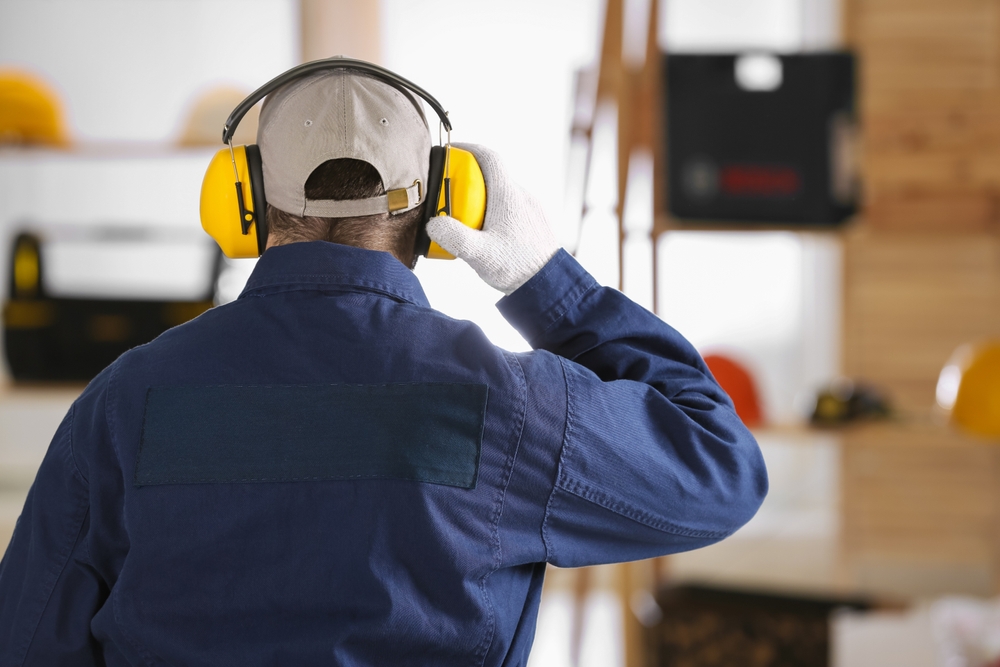Hearing Protection In The Workplace
Noise-induced hearing loss, or hearing impairment, can often be attributed to or caused by sources outside of work-related exposures. After all, we live in a world where loud noises outside of work are common, like from activities such as riding quads or motorcycles, the music we enjoy, concerts we attend, and the hobbies we might have (such as playing in a band). And there’s often that person who thinks headphones are speakers and has the music playing loud enough that it can be heard by everyone in the room. So yes, loud noise is common from many sources outside of the work environment. And yes, these loud noises can lead to hearing loss.
There is no denying that the tools that we use in our lines of work may create loud noise, too, but that doesn’t necessarily mean that employees will lose their hearing by using these tools. With the proper workplace hearing protection controls in place to eliminate, reduce, and protect against potentially damaging noise exposures, we reduce the chances that our employees will experience occupational hearing loss.
Understanding Hearing Damage
How loud does the noise need to be to damage a person’s hearing? Hearing loss can result from a single loud sound (like firecrackers) near your ear. Or, more often, hearing loss can result over time from damage caused by repeated exposure to loud sounds. The louder the sound, the shorter the amount of time it takes for hearing loss to occur. The longer the exposure, the greater the risk for hearing loss (especially when hearing protection is not used or there is not enough time for the ears to rest between exposures).
Sound is measured in decibels (dB). A whisper is about 30 dB, normal conversation is about 60 dB, and a motorcycle engine running is about 95 dB. Noise above 70 dB over a prolonged period of time may start to damage your hearing. Loud noise above 120 dB can cause immediate harm to your ears.
OSHA requires actions to be taken when a worker is exposed to 85 decibels of noise averaged over 8 hours. Let’s put this in perspective. Remember those headphones used as speakers? That music was probably playing at full volume, which can often register as 105 decibels. Here’s the thing, though..increasing the noise above 85 decibels requires less time for noise exposure – with many experts believing with each 3-decibel increase the time of exposure should be halved (e.g., 4 hours of exposure to 88 decibels, 2 hours of exposure to 91 decibels, and so on). So, the louder the noise, the faster hearing loss occurs.
Noise Levels In The Workplace
Where do the tools and environments where we work fit into this picture?
- Air compressors from 3 feet away register 92 decibels, which suggest it might less than 2 hours to cause hearing damage
- Powered drills register 98 decibels, which would cause damage after 30 minutes
- Typical factories often register at 100 decibels – that’s 15 minutes of exposure
- Powered saws can reach 110 decibels from 3 feet away, which could cause permanent damage in under 2 minutes
In short, if workers are exposed to these noise levels without protection, then hearing loss is very likely. The only way to know the exact noise levels that workers are exposed to is to conduct noise monitoring using specialized equipment, though this is only required when exposures are at or above 85 decibels. Some indications that noise levels may be this high are if employees complain about the loudness of the noise, or if the noise levels make normal conversation difficult. For example, if you need to raise your voice to be heard at arm’s length, the noise level in the environment is likely above 85 dB in sound intensity and could damage your hearing over time. Also, consider that these conditions may not occur across the entire work site, but may be limited to a specific task or piece of machinery
How then, do we protect our employees and their hearing?
The Importance Of Hearing Protection In The Workplace
The best protection we can provide is to eliminate the hazard, by eliminating the need to work with the tools or in the environments that create these noise exposures. Realistically, though, this isn’t always possible. We can also work to reduce the noise levels that employees are exposed to. Some tools and machines are available that are designed to operate at lower decibels, therefore reducing the risk of hearing loss. We can also implement administrative controls, such as placing a cap on the number of hours that an employee can work in a high-decibel environment or limiting the hours working with specific tools and equipment.
Our final line of protection is our PPE which meets OSHA hearing protection requirements. Ear plugs and ear muffs can reduce decibel exposures, providing protection against hearing loss. Ear plugs provide the greatest amount of protection as long as they are inserted correctly. Therefore, employees need to be trained to wear them correctly when they are used. Ear muffs can also reduce the decibel exposures, though not to the extent that ear plugs can. They are easier to wear correctly, though, which is why some workers prefer them.
Some high-decibel exposures may be unavoidable to perform the tasks necessary for our operations, but that doesn’t mean that we can’t take steps to protect employees and their hearing while at work. What they do in their free time, like attending a rock concert (which can peak at 130 decibels), becomes their choice.
Creating & Implementing A Plan For Workplace Hearing Protection
If you need to create or update your safety management plan to include OSHA hearing protection Amerisafe Group can help.








